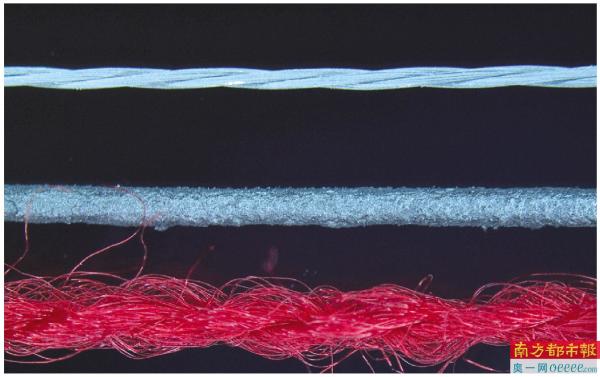

你会瘫倒在书桌上吗?
你会拖着脚走路吗?
别担心,可能很快,你就可以穿上能够监测身体运动并提醒你改善体态的背心和袜子了!
已经制作出了一系列的样品
自从苹果手表开启了智能可穿戴设备的赛道,该领域已经诞生了不少成果。在此基础上,麻省理工又更进一步,研制了电子智能衣服。其计算机科学和人工智能实验室研究了一款衣服,可以用“电子触觉”追踪记录穿戴者的身体活动并预测其行动。这项技术可运用于许多场景下,包括运动员训练、监测老人健康、以及预测人是否要摔倒。
这项设计最核心的优势是,与现存的许多可穿戴设备不同,它可以与服装生产业融合并投入大规模生产。现在市场上的手环、眼镜等智能可穿戴设备通常都装载了成百上千的传感器,在身体移动时,部分传感器会与身体接触摩擦,受到影响,记录数据不准确。而麻省理工团队研发了一套自动纠正程序,利用机器学习算法自动监控,辨别出受影响的传感器并进行调整。
学者们已经制作出了一系列的样品,从袜子到手套,甚至到背心。袜子可以通过脚受力的触感预测出穿戴者的动作变化。而背心则可以监测穿戴者的姿势、活动,还有衣服接触到的物体质感。
能赋予机器人类似人类的皮肤
这种传感面料柔软、伸展性强、透气,还可以被纺织成不同的款式。表面上看,这种新型材料就像是普通的纺织品,类似于羊毛和腈纶制品的触感。其传感器是纤维级别的,可以被纺成纱线,再进一步织成柔软、可延展、舒适的布料,穿戴起来非常地舒服自然。
通过智能衣服,教练可以准确地分析学员的动作并给出意见。有经验的运动员可以用衣服记录下他们的动作姿势,给初学者学习。
长远来看,有了这项技术,机器人可以通过可穿戴设备学习更多不同活动。目前很多机器人是没有触觉的,而这项压力传感的触觉技术,能赋予机器人类似人类的皮肤,让它们完成更加复杂的工作。
Clothes can correct sitting position? MIT’s Black Tech is coming!
Do you slouch at your desk? Or drag your feet when you walk? Soon, you might be able to wear a vest or a pair of socks that can sense your body’s movements and gently nudge you to improve your posture.
Smart wearable technology has come a long way since Apple Watch entered the game. MIT seems to have worked further by making its electronic clothing. The university’s Computer Science and Artificial Intelligence Lab (CSAIL)program has developed apparel that tracks your body’s movements with “tactile electronics” to gather data about people’s body movements and predict performance. This could be useful in a variety of settings, including athletic training, monitoring the health of elderly patients, and identifying whether someone has fallen over.
A key advantage of the design is that, unlike many existing wearable electronics, theirs can be incorporated into traditional large-scale clothing production. Much of the wearable tech on the market is embedded with hundreds of sensors, very often, a few of which don’t work ineffectively as the material moves and interacts with the body, leading to inaccurate data. To fix this, the team developed a self-correcting mechanism that uses a self-supervised machine learning algorithm to recognize and adjust when certain sensors in the design are off base.
The researchers have developed a range of prototypes, from socks and gloves to a full vest. Their socks predict motion by looking at how different sequences of tactile footprints correlate to different poses as the user transitions from one pose to another. The full-sized vest can also detect the wearers’ pose, activity, and the texture of the contacted surfaces.
The machine-knitted tactile textiles are soft, stretchable, breathable, and can take a wide range of forms. On the surface, the new material feels like any other knitted fabric, like wool or acrylic. The sensors are embedded at the fiber level and then woven to create yarn. This yarn is then knitted into textiles that are designed to be soft, stretchy, and comfortable, so the wearer moves naturally while wearing the garment.
With the ‘smart clothes’, a coach can analyze people’s postures and give suggestions on improvement. It could also be used by an experienced athlete to record their posture so that beginners can learn from them.
In the long term, robots might be trained to learn how to do different activities using data from the wearables. As the machines are tactilely blind, the addition of this pressure-sensing technology would give robots a sensation comparable to having human skin, enabling them to perform more sophisticated tasks.
采写:实习生 郭文伊 南都记者 蒋模婷

